The Biggest Differences Between Butter And Shortening
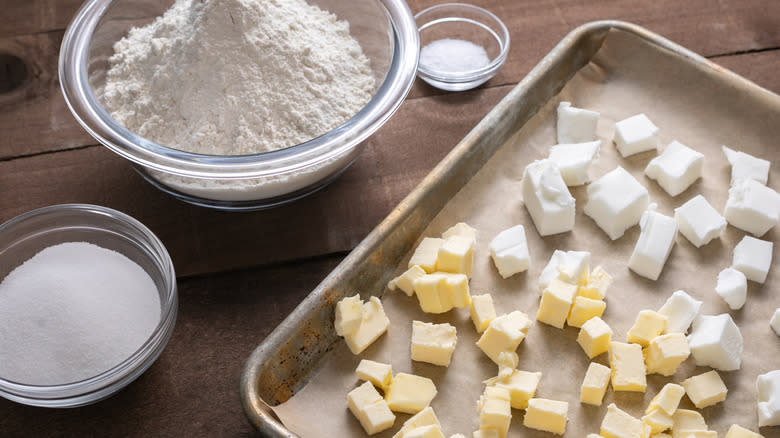
Choosing between butter and shortening presents one of the more confusing decisions you have to make on your trip to the grocery store. Everyone knows and loves the time-tested staple that is butter. It's rich and creamy and delicious — usually too tempting to pass up. Shortening on the other hand, well ... most of us know it exists at least. It's a fine substitute for butter, but is it healthier or way less so? And if it's not more nutritious, why does it exist in the first place? Butter seems good enough to not need a substitute, and with lard, olive oil, and all the other options out there we have no shortage of cooking fats to choose from. Yet shortening endures, with those cans of Crisco lining pantry shelves year after year. So obviously it's good for some things.
One clear reason for the existence of shortening these days is that it's vegan, making it a solid alternative for people who don't eat dairy or animal products. Even for people without dietary concerns, shortening has its uses, especially in baking. It's certainly made to mimic butter in a lot of ways, but it tastes a little different and its constitution affects the texture of foods it's cooked with in different ways.
The butter or shortening conundrum is a classic case of two ingredients that aren't really better or worse than each other in any specific way. It all comes down to your personal preference between two similar outcomes.
Read more: 12 Popular Grocery Store Butter Brands, Ranked
What Is Butter?
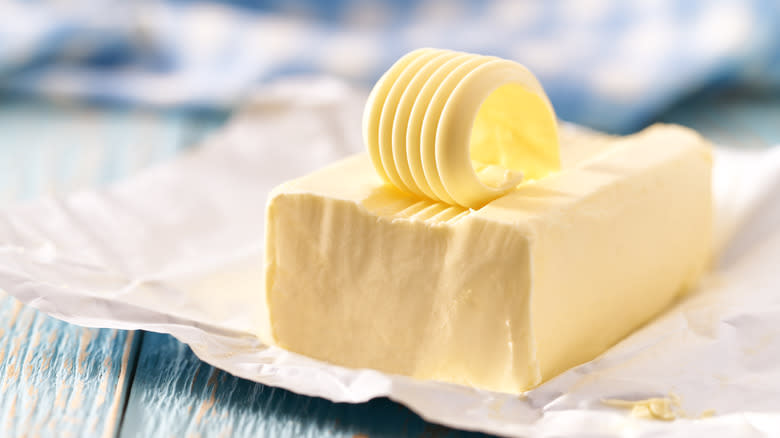
Butter is one of the most ubiquitous ingredients out there, but do you actually know what it is besides a spreadable dairy product? Butter is made up of butterfat, milk solids, and water. It gets its creamy texture because it is actually an emulsion, like mayonnaise. Butter starts life as milk or cream, before being churned. The agitation of the churning causes the fat molecules to clump together, eventually separating the fat from the liquid buttermilk, as the fat forms solid butter.
Butter is one of the oldest foodstuffs in production, dating back over 10,000 years. It's thought to have originated in Africa, when milk would have been naturally churned by being shaken in containers that were strapped to domesticated animals like sheep as people traveled, accidentally creating butter. A tablets as old as 4,500 years depicts butter being made, and it was used for everything from cosmetics in Ancient Rome to religious offerings in Sumer, in addition to being eaten spread on bread, just like today.
Butter can come in a diversity of styles. There's tangy, fermented, cultured butter, or uncultured, smoother sweet cream butter, and they can each vary in fat and salt content. Also, everything from the type of milk and how the animals are fed to the method of production — like industrial or hand churning — can produce a surprising array of shades, textures, and tastes.
What Is Shortening?

Any fat that remains solid at room temperature can be shortening, and the term refers to a number of different products, like lard and the butter substitute margarine. But when most people and recipes say shortening they are referring to vegetable shortening, like Crisco. Shortening was originally lard, until a French chemist invented the process to create margarine in the mid 19th century. Vegetable shortening is created by using a base oil and hydrogenating it, which just means adding hydrogen. Crisco uses soybean and palm oils, but cottonseed and vegetable oils are also used to make shortening. It became popular in the early 20th century as a cheap product that could be used the same way as lard or butter in many recipes, and became a staple in many baked goods.
Unlike butter, shortening is 100% fat, which is what makes it shelf stable at room temperature, and part of how it stays so cheap. The lack of water also means that when it cooks or melts, it doesn't produce any steam, and unlike butter it doesn't separate. Beyond the different fats used to make it, there are also different types of shortening: solid, liquid, all-purpose, and cake. Solid and liquid simply refer to its state when stored at room temperature. Cake shortening has emulsifiers added, which help baked goods retain moisture, while all-purpose does not have extra additives.
Butter Has A Richer Flavor
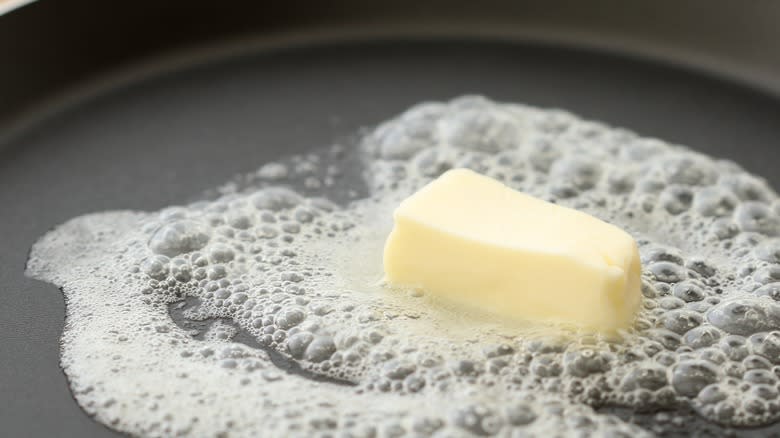
Butter is used not just as a cooking fat, but also for the rich, fatty flavor it provides. Butters can vary in flavor, from more grassy, fancy organic butters, to sharper cultured styles, but they all share that distinct taste of creamy fat with a slight sweetness. It's powerful and distinct enough that we call other foods "buttery" when they have a similar taste. Because of the milk fats in butter, it can also brown and become more complex as it cooks, providing extra sweetness and caramelized notes. Like olive oil, it is not just a neutral ingredient, but something that will lend its strong flavor to any dishes its used in, or baked goods it's mixed into. Sometimes it's even the main flavor in sauces, cookies, or cakes.
As it is made from neutral oils, shortening has no discernible flavor or aroma, other than generic "fat." While this may seem like a distinct disadvantage compared to butter's lovely taste, the blank slate can be useful depending on the recipe. If you need a fat primarily for the texture or as a cooking fat, but don't want the flavor of butter to overpower or distract from the other ingredients, shortening will get the job done. There are also flavored shortenings available if you want some of the taste of butter, but the other attributes of shortening.
Shortening Produces A More Tender Texture In Baking
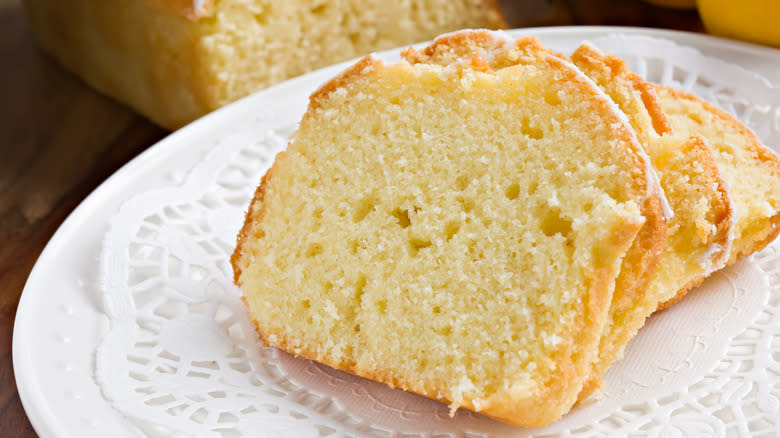
Shortening has some very specific effects on the textures of baked goods, in fact, that's where the term "short" comes from. Doughs that stretch and hold together, like bread, are considered long, while doughs that get soft and crumbly as they bake are considered short; shortening helps achieve that latter texture. The fat in shortening prevents gluten formation, keeping cakes and cookies from expanding like bread does. Butter can also do this, like with all-butter shortbread cookies, but because butter breaks into oil and milk solids when it cooks, the finished products will harden and crisp up more after baking than with 100% fat shortening. So, while both butter and shortening can make your recipes short, shortening will produce baked goods that are both softer and shorter than butter.
Shortening also helps doughs retain their structure and even rise better, compared to butter, because it is pumped with nitrogen. Shortening has a higher melting point than butter, so recipes made with butter will start melting in the oven quicker, causing them to sink and flatten. This is neither bad nor good, it just depends on your textural preference for a thin and crispy, or more cake-like finish. Shortening also holds onto air better than butter when it's whipped. For recipes that have you creaming sugar and fat for texture, like many cakes, shortening will produce a loftier result than butter.
Butter Is A Little More Nutritious But Contains More Saturated Fat And Cholesterol
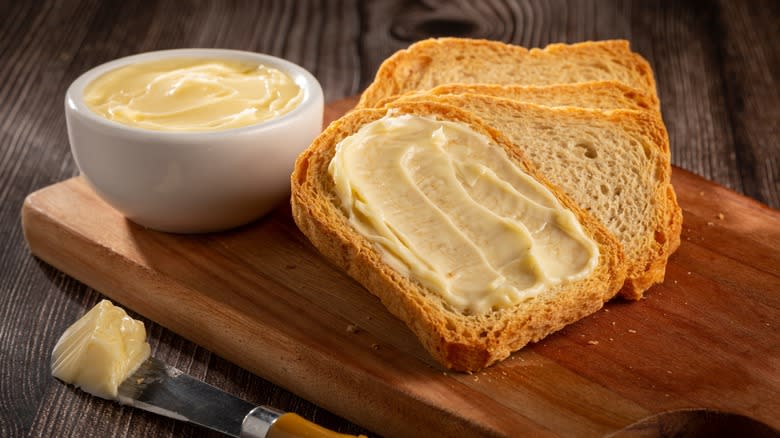
Neither butter nor shortening is exactly a health food — that isn't why they exist — but the more natural production of butter does leave it with more vitamins than shortening. Butter contains a decent amount of vitamin A (7% of your daily value per serving), small amounts of vitamins E and K, calcium, potassium, and phosphorus. Shortening is basically devoid of nutrition with the exception of some vitamin K and trace amounts of vitamin E.
As should be not surprising considering shortening is 100% fat, it has more fat overall than butter, yet they are still comparable, with 13 grams in a serving of shortening versus 11.4 for butter. However, because it comes from an animal product, butter is higher in saturated fat, containing about twice as much as shortening. Butter also has 30 milligrams of cholesterol per tablespoon, while shortening has none.
Nutritionally, one big downside to shortening used to be that it contained a large amount of artificial trans fat, however, in 2018, the Food and Drug Administration banned artificial trans fats, except in trace amounts. Brands like Crisco have since reformulated their process to make shortening trans fat free. That said, lots of shortenings now contain something called interesterified fats as a substitute, and there has not been much research into their long-term health effects.
Shortening Works As A Vegetarian Or Vegan Substitute
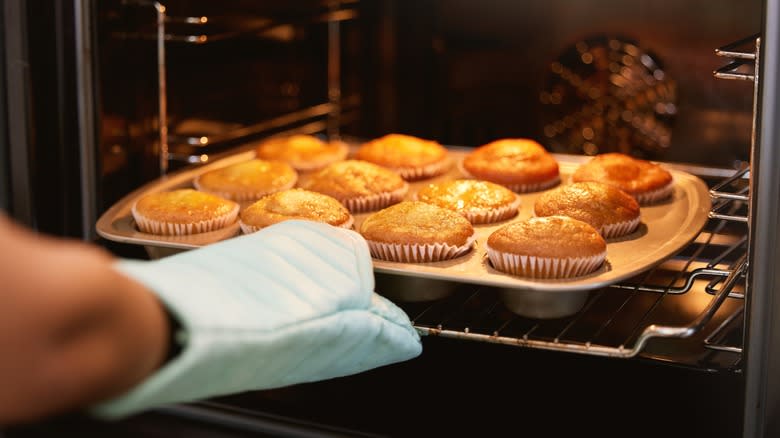
While shortening produces both a different flavor and texture in food when it's used, being a fat that is solid and spreadable at room temperature means it still makes a decent substitute for butter. As such, you can swap out one for the other in pretty much any recipe as long as you're fine with those differences in the final result. One of the most obvious advantages of shortening is that it's made entirely from vegetable products, so even though it is processed, it's also vegan. The ease of substituting shortening for butter makes it great for transforming baked goods that rely on butter into vegan-friendly treats with little to no drop-off in quality.
Shortening can be subbed into recipes with minimal changes to the other ingredients at a simple one-to-one ratio. Because butter is 80% fat and shortening is 100%, you can alter the ratios of your ingredients a little bit if you want your baked goods with shortening to be closer to how they would turn out with butter. Just cut down the shortening by 20% and add some milk or water to fill in for the liquid content of the butter. And if you aren't vegan or vegetarian, you can get the best of both worlds by using both butter and shortening in recipes.
Read the original article on Tasting Table

